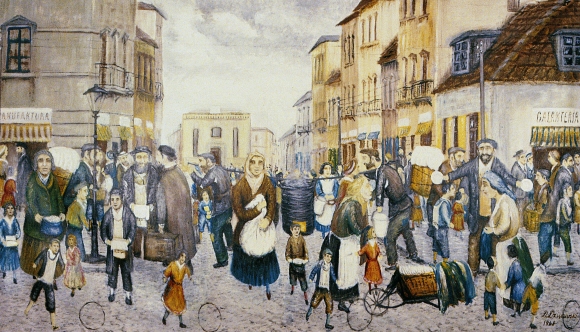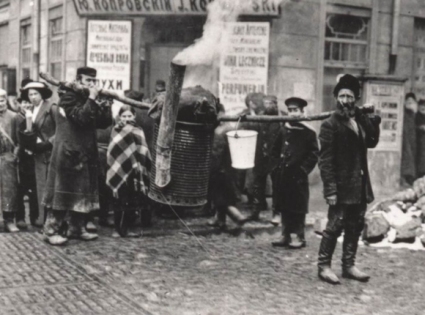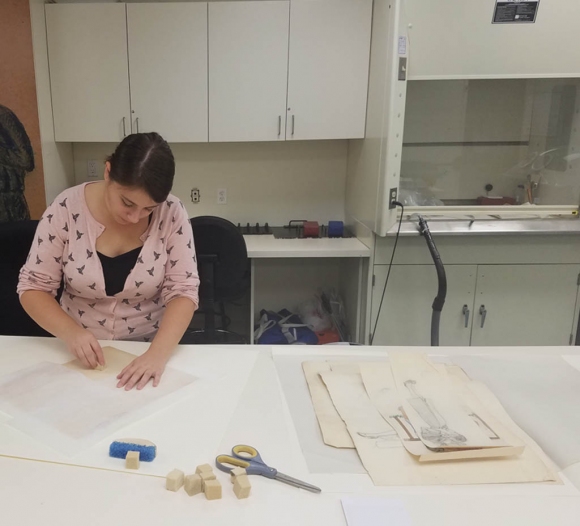
While we prepare for Passover 6 or more feet away from one another, we can longingly appreciate this David Dzienciarski painting of a Market before Passover from Yeshiva University Museum’s collection (gift of the artist’s estate). Created around 1970, the work depicts a crowded street in the Jewish section of Lodz, reimagined from the artist’s childhood. Pre-Passover activities are proceeding apace. Two men shoulder a cask of boiling water on a pole (the water would have been used to kasher dishes and utensils for the holiday); a rag seller offers up new plates in exchange for old clothes; shoppers go this way and that carrying their sacks and baskets; while children, oblivious to the surrounding chaos, roll hoops and play in between the harried adult bodies.
As richly evocative as the scene is, the painting is as far removed from documentary reality as we all currently are from our places of business and communal gathering. Dzienciarski (1912-1980), who miraculously survived World War II – first, as a member of the Polish army and then as a German prisoner – managed to escape eastward through the Russian frontier before making his way in 1948 to Israel, where he settled. This work was painted by the artist among tens of others while living in the new Jewish homeland decades after the leveling of the Lodz Ghetto and the decimation of European Jewry.
The son of a lumber and furniture merchant who traveled between Polish towns and villages by motorbike, Dzienciarski considered his paintings a mixture of observation and imagination:
“They are partially a documentary record and partially a personal vision depicting a way of life, which was suddenly erased and which tragically can never again exist. There is something in my paintings to which all can relate, but I believe they will have the greatest impact on the generations of young people who want to know what the Holocaust destroyed.” He viewed them as his life’s most important achievement, serving to make manifest for future generations a culture that no longer existed.
Market before Passover was exhibited among 35 works by the artist in a monographic show called “In My Mind’s Eye: Jewish Life in Lodz, 1920-1939,” presented by Yeshiva University Museum in 1980, around the time of the artist’s death. You get a sense of Dzienciarski’s creative relationship to observed reality from a photograph in YIVO’s collection showing Koshering Dishes for Passover in Lodz around 1920, when the artist lived there as a child (Courtesy of the YIVO Institute for Jewish Research, New York).

Perhaps we can take inspiration and derive strength from such a monumental and vital act of artistic preservation, re-creation and forward-looking-ness. Market Before Passover provides an imaginative window on another time and place, which is most welcome in the here and now, and could also helpfully remind us to avoid the crowds.
